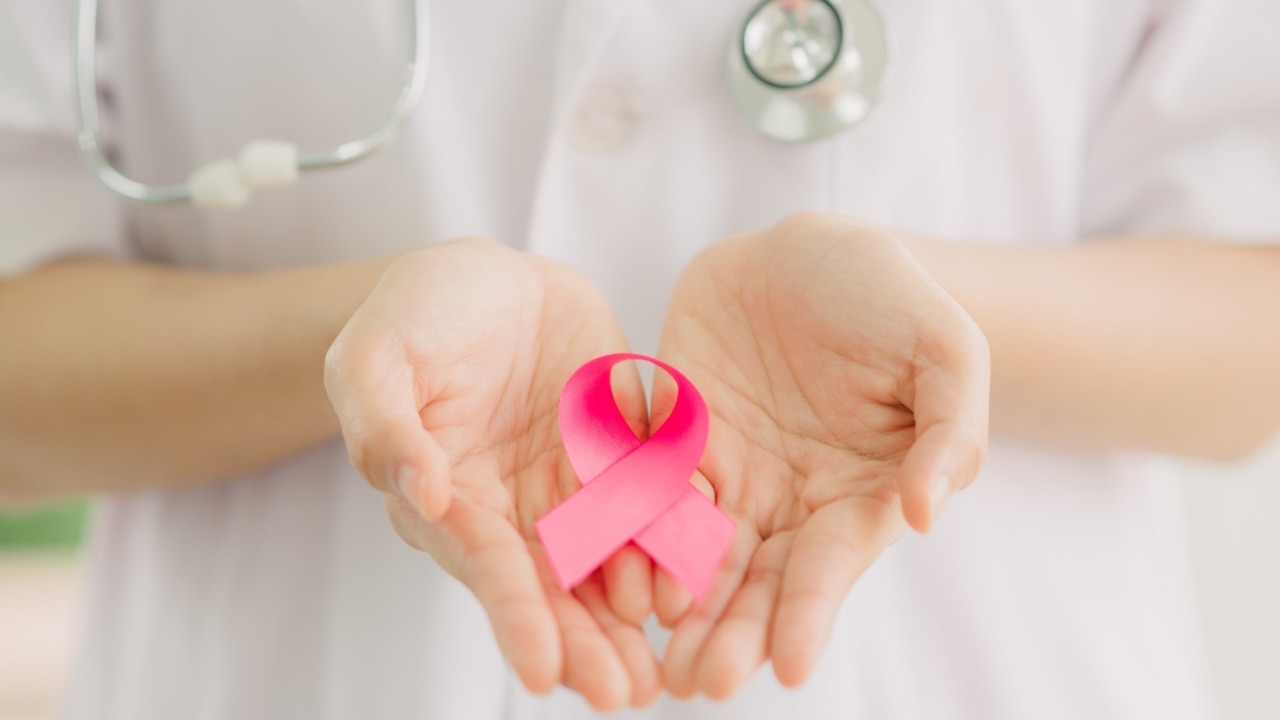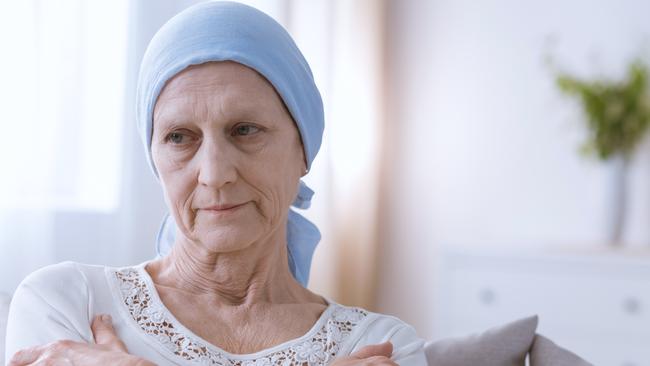New Garvan Institute breast cancer test to help personalise treatment for Australian patients
A breakthrough new method of testing for breast cancer in Australia could predict which treatments will work for women.

National
Don't miss out on the headlines from National. Followed categories will be added to My News.
EXCLUSIVE: A breakthrough new method of classifying breast cancers could predict which treatments will work in individual women and which of them will respond to previously-overlooked immunotherapy.
It has also discovered the important role of an ignored but common cell type in cancer outcomes.
Analysing breast cancer biopsies from patients at Sydney hospitals, Garvan Institute researchers used new microscopic technology to examine individual breast cancer cells.
They discovered more than 50 distinct cancer, immune and connective cell types and states, then assigned them to one of nine cancer ‘ecotypes’.
Each ecotype is associated with a different cancer prognosis.
Lead researcher Associate Professor Alex Swarbrick whose research was supported by the National Breast Cancer Foundation has found one ecotype -— ecotype 4 — is likely to respond well to groundbreaking new immunotherapy treatments.

Immunotherapies are leading edge cancer treatments found to “cure” some cancers, including melanoma, but have not worked well at all in breast cancer.
The treatments have a response of less than 10 per cent in breast cancer patients.
“We found one breast cancer ecotype that uniquely has a high number of infiltrating lymphocytes, which are the target of current immunotherapies, and low levels of cells that we know to suppress lymphocytes,” Associate Professor Swarbrick said.
“We would predict that those patients would respond well to immunotherapy.”
The team will now test the hypothesis by re-examining previous trials of immunotherapies in women with breast cancer and retest their tumour tissue by ecotype to see if the hypothesis stands up.
They will then conduct a prospective trial in which women, newly diagnosed with breast cancer, have their disease ecotyped and then track which patients respond best to immunotherapy.

In a separate discovery, the research team found mesenchymal cells, or fibroblasts — the type of cells that help you heal a wound when you cut your skin — are important ecotypes and contribute to the way cancer behaves.
“I’m actually really excited about the development of new classes of drugs for those women who were resisting therapies that are still not the best thing for them,” Professor Swarbrick said.
Previous research by Professor Swarbrick on a potential treatment for triple negative breast cancers, targeting these mesenchymal cells, showed promising results and he is hoping further funding and research might develop the potential treatment.
“That’s something we’re working on, and other groups are working on is developing new drug targets to kind of take the new knowledge we’re getting from these kind of studies, to develop new classes of drugs,” he said.
The team is now aiming to develop a clinical test that will ‘ecotype’ cancers to determine which treatment is best suited to which patient.
Explaining the ecotypes, Professor Swarbrick said all cancers start from a single cell, picking up errors in their genetic code that leads them to essentially run amok, divide uncontrolled, and to spread and grow into a tumour.

Breast cancers are currently classified into three clinical subtypes (luminal, HER2+ and triple negative), based on specific receptors they do or do not produce.
The new classification system will not override these but instead work alongside them.
The number of ecotypes may also change.
“The number nine is probably a bit arbitrary, you know, this is, this is an inexact art, It might really be seven, it might really be 12, we can’t be certain yet,” he said.
When Sydney mum Renee Chahine developed a swollen, sore arm she thought she might need physiotherapy, instead she received a shock cancer diagnosis.
“My world just crumbled in a minute,” said the 36 year old banker from South Western Sydney.
She faced months of gruelling chemotherapy, a mastectomy and extensive radiotherapy at the Kinghorne Cancer Centre to treat the cancer and she praises the careful personalised care she received.
During her treatment Mrs Chahine generously donated her tumour tissue to the research that helped identify the nine new ecotypes of breast cancer.
“I think any breakthrough that gives anybody a glimmer of hope to live, or to be cured, is extremely important. It’s the hope that keeps people alive,” she said.
“I am so thankful to the medical research and to the staff that do this type of work that has kept me alive, and other people,” she said.
Originally published as New Garvan Institute breast cancer test to help personalise treatment for Australian patients




